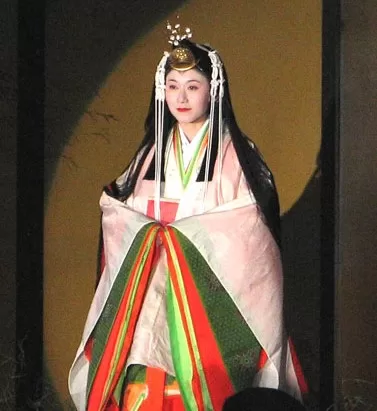Saigū Gyōretsu: A Grand Heian Period Procession Revived at Arashiyama’s Nonomiya Shrine

The Nonomiya Shrine: A Sacred Site Honoring a Time-Honored Tradition
Sagano, known for its breathtaking bamboo grove and its crowning glory–the Nonomiya Shrine, is one of the must-visit tourist spots in Arashiyama. The shrine was historically used by Saio, an unmarried princess chosen from the royal family to serve as a shrine priestess at Ise Jingu. This shrine in Japan boasts the oldest Torii gate, known as Kuroki Torii. Its low fence, the Koshiba-gaki, made of small branches, further accentuates its charm.
Renowned for its beauty and sanctity, the shrine has been immortalized in “The Tale of Genji”–a classic piece of literature from the early 11th century Heian period. The author is none other than Murasaki Shikibu, a noblewoman whose deft penmanship beautifully depicted the significance of Nonomiya Shrine in Japanese history and culture.
Saigū Gyōretsu: A Regal Reenactment
One of the most popular Kyoto events in October is Saigū Gyōretsu. Saigū Gyōretsu procession is held annually every October as a tribute to this long-standing tradition celebrated all over Japan. It gathers about a hundred people from far and wide who dress up in extravagant outfits reminiscent of the traditional “Saio Gunko”, a lengthy travel voyage from Kyoto to Ise that included hundreds of attendants.
This arduous journey would take roughly 5-6 days stopping by six temporary shrines en route to Ise where they perform their holy service. Also featured in this procession is the ancient court music setting a divine atmosphere throughout the gathering.

Celebrating Saio: The Princess Priestess
Saio were selected unmarried princesses who were sent in service to Ise Jingu Shrine as Mitsueshiro. This custom traces back to Asuka Period (about 592-710), wherein it’s said that 64 princesses dedicated themselves in serving emperors over a span of 660 years.
This grand procession graphically reenacts the long journey Saio embarked on towards Ise. Spectators are treated to sumptuously dressed participants exuding opulence elevating viewing experience exponentially.
Omisogi-no-gi: A Purifying Ritual
One integral part of the Saigū Gyōretsu procession is “Omisogi-no-gi”–a ceremonial ritual where Saio and her attendants purify themselves by ritually washing their hands in river water.
Onlookers are treated to an elegant synchrony of movements along with intricately designed clothes donned by participants as they go through this purification ceremony, making it an unforgettable sight to witness.
A Historical Performance at Arashiyama
Every year during October, visitors witness this time-honored tradition come alive in Arashiyama–Saigū Gyōretsu. This annual festival reenacts Heian-era court formalities wherein performers adorned in nobles’ clothing from that period accompany priests and soldiers help attendees transcend time taking them straight back to Heian period.
A ceremonial dance performed by shrine’s priestesses marks the beginning of purification site rituals led by a priest reading aloud prayers. The paper doll released into the water during Omisogi no Gi ceremony grabs everyone’s attention marking a significant moment during festivities.
Time your visit to coincide with this event if you want an usual cultural experience amidst the stunning backdrop of Arashiyama bamboo forest and leave with memories that will last a lifetime!
If you want to know more about Kyoto events and traditions in October, check out Kasagake Shinji. Kasagake Shinji is a traditional Japanese horseback archery event at Kamigamo Shrine in Kyoto. During Kasagake Shinji, skilled archers on horseback demonstrate their accuracy and technique by shooting arrows at targets while riding without stopping the horse.